Safety culture in blue-collar industries: How to build trust and protect your people in 2025
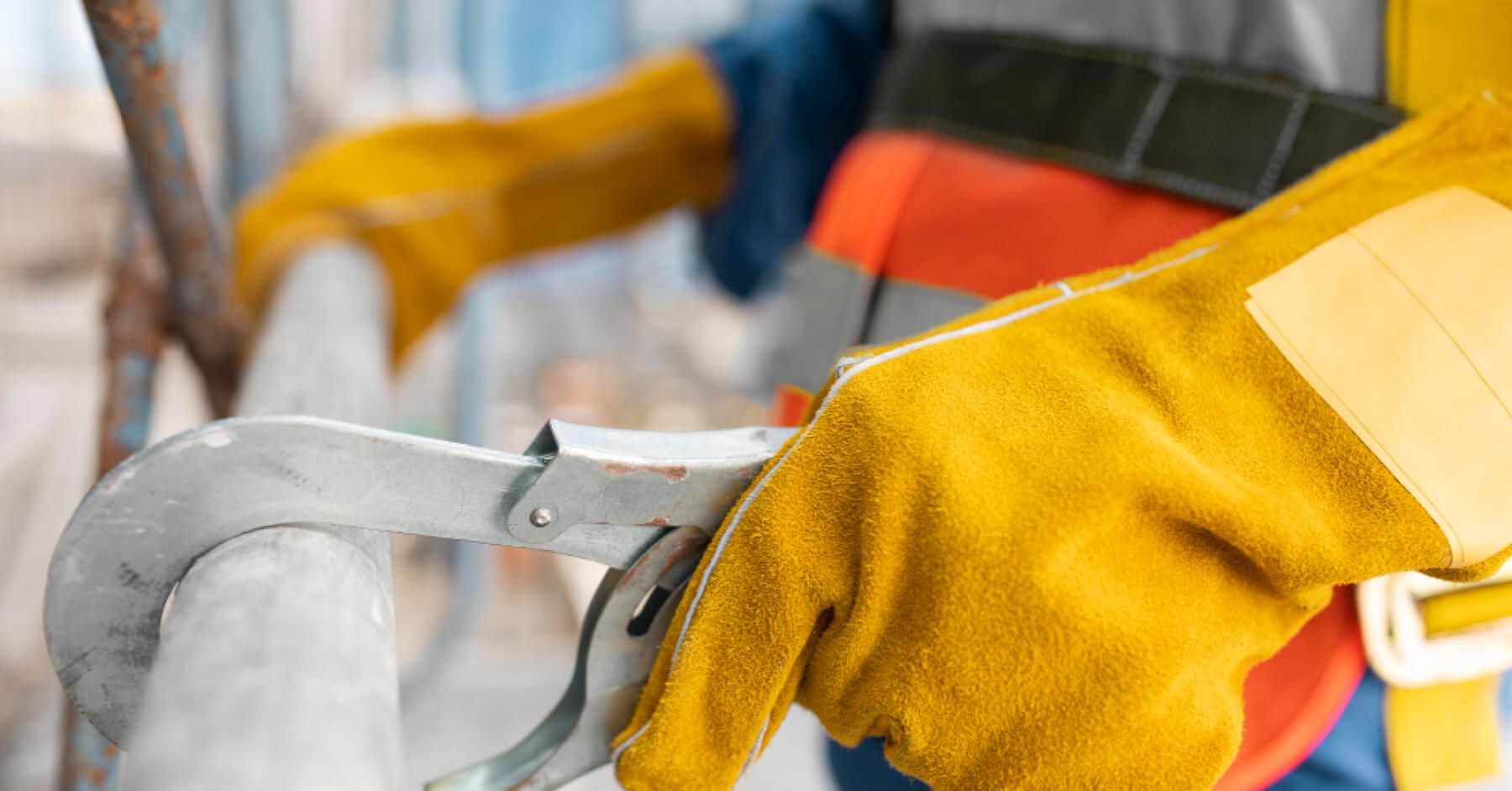
Remember riding your bike as a kid, racing down the street with the wind in your face? You probably didn’t think twice about safety until that first big fall. Suddenly, helmets, pads, and watching for bumps became second nature. That shift wasn’t about rules; it was about feeling secure enough to ride freely and still push your limits.
Building a safety culture in blue-collar industries works the same way. It’s not just about compliance checklists or warning signs on walls. It’s about creating an environment where workers feel protected enough to focus on the job, speak up when something’s off, and trust that their well-being matters as much as the work itself. When safety becomes second nature, teams thrive without fear holding them back.
Keep reading to discover how to build that kind of safety-first culture.
TL;DR
What does “safety culture” really mean in blue-collar workspaces?
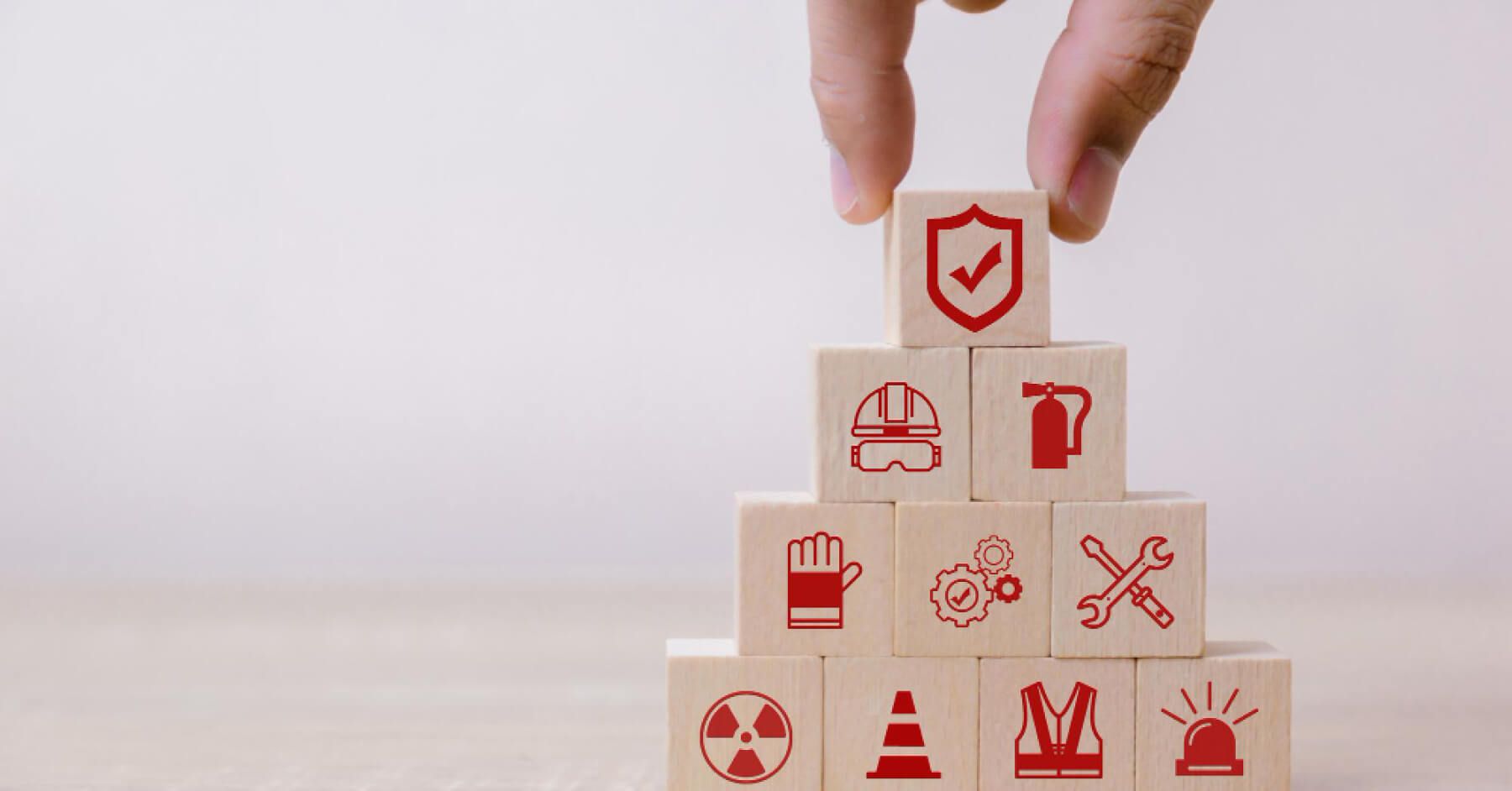
TL;DR
Safety culture in blue-collar workspaces goes beyond compliance checklists and it’s the shared mindset that safety is everyone’s job, every day. It’s shaped by leadership priorities, peer behavior, and how consistently safe practices are reinforced on the floor.
When safety becomes an instinct rather than a rule, teams protect each other naturally. This lowers incidents, boosts trust, and creates an environment where people feel valued and vigilant.
In blue-collar workspaces, “safety culture” goes far beyond posting rules on a wall or running mandatory training once a year. Blue-collar work and blue-collar roles are physically demanding and often involve hazardous environments, making safety a top priority.
Think of it as the unspoken agreement that everyone looks out for each other, no matter how routine or high-pressure the job might be. A strong safety culture in blue-collar industries means employees instinctively pause to assess risks, speak up when something feels off, and follow protocols not because they’re told to, but because they want to protect their team.
For the blue-collar workforce, this also includes making it a daily routine to identify potential hazards and address them proactively. This routine is crucial for workplace safety for industrial teams, where the pace is fast, and providing proper training and personal protective equipment is necessary, and hazards can change by the hour.
It also means leaders model safe behaviors, encourage blue-collar safety communication, and provide comprehensive training, including regular refresher courses and ongoing training sessions. It’s essential to maintain a strong safety culture.
Why is a strong safety culture a game-changer for frontline-heavy industries?
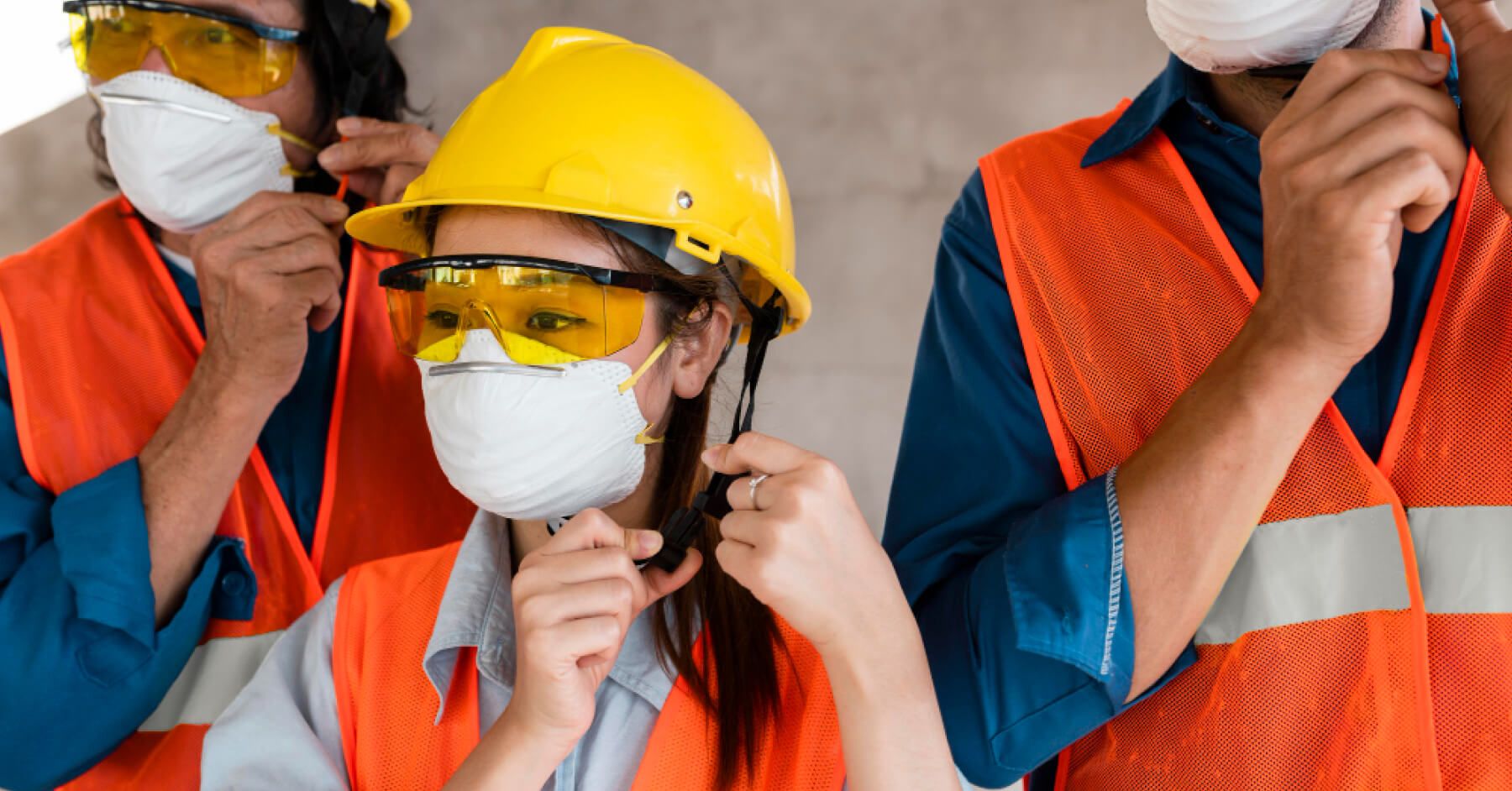
When your business runs on the grit and skill of frontline teams, safety isn’t just a compliance box; it’s the backbone of sustainable operations. A strong safety culture in blue-collar industries changes how people work, think, and trust each other, creating ripple effects that go far beyond accident prevention.
Here’s why it’s a game-changer in reducing workplace accidents :
- Fewer accidents, fewer disruptions: When workplace safety for industrial teams becomes second nature, hazards are spotted and handled before they spiral into costly incidents. This means fewer injuries, less downtime, and minimal disruption to schedules. In industries where every hour counts, proactive safety can be the difference between meeting deadlines and losing contracts.
- Stronger employee safety mindset: A healthy employee safety mindset shifts the focus from “following rules” to “protecting people.” Workers start to see safety as a personal responsibility, not just a management directive. This proactive thinking helps avoid risks and sets a positive example for newer or less experienced team members.
- Higher trust and morale: When teams see that leadership prioritizes safety and trust in frontline jobs, it sends a clear message that their well-being matters as much as their output. This boosts morale, fosters loyalty, and creates a more cohesive crew that’s willing to go the extra mile for each other.
- Better blue-collar safety communication: Good safety culture thrives on clear, consistent communication. In high-risk environments, strong blue-collar safety communication ensures that warnings, updates, and changes reach everyone — no matter the shift, site, or language barrier. This reduces misunderstandings that could lead to accidents.
- Reduced costs and liabilities: Every injury avoided is money saved — from workers’ compensation claims to potential lawsuits. Investing in safety lowers insurance premiums and prevents the hidden costs of downtime, retraining, and damaged equipment. It’s a financial safeguard that pays for itself over time. A strong safety culture also helps establish a productive work environment, supporting both safety and efficiency.
- Proactive safety: Proactive safety means anticipating risks and putting measures in place before accidents happen. This includes regular safety drills and clear emergency procedures so everyone knows how to respond in case of fire, chemical spill, or other emergencies. Being prepared is key to minimizing harm and disruption.
- Training and compliance: Ongoing safety training is essential to protect workers and ensure workers are knowledgeable, confident, and compliant with safety protocols. This helps everyone understand and implement the right safety measures on the job.
- Enhanced company reputation: A visible commitment to manufacturing safety culture attracts skilled workers who want to be part of a responsible employer. It also reassures clients and partners that your company values reliability, quality, and ethics — strengthening your brand in competitive markets.
If a strong safety culture drives trust and efficiency, what happens when it’s missing? The warning signs aren’t always dramatic accidents; they often appear as small daily habits that quietly increase risk.
What does a poor safety culture look like on the factory floor or jobsite?
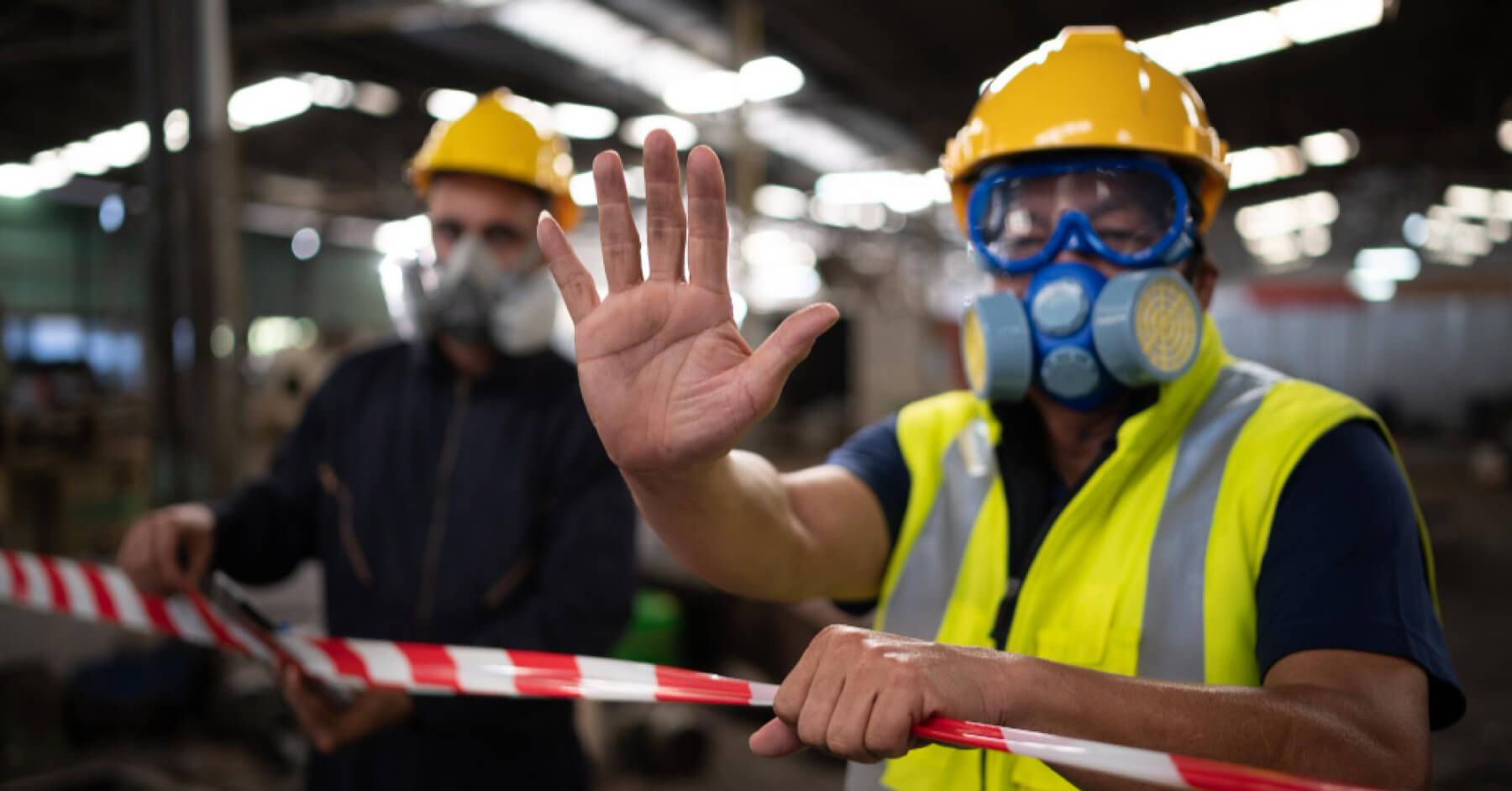
A weak safety culture in blue-collar industries doesn’t always look like chaos — sometimes it’s the quiet, everyday habits that slowly increase risk. On a factory floor or jobsite, these cracks can go unnoticed until something goes wrong. Here’s what poor safety culture often looks like in action, potentially leading to workplace accidents:
- Cutting corners to save time: When meeting deadlines is valued over workplace safety for industrial teams, workers may skip checks, ignore protective gear, or rush through hazardous steps. This short-term gain creates long-term risk, increasing the likelihood of accidents that could halt production entirely. Unsafe behaviors and the lack of proper use of safety gear or equipment further increase these risks.
- Lack of safety and trust in frontline jobs: In environments without safety and trust in frontline jobs, employees hesitate to speak up about hazards or unsafe practices. This silence allows dangerous conditions to persist, sometimes until they cause serious harm.
- Poor blue-collar workers' safety communication: Inconsistent or unclear blue-collar safety communication leads to misunderstandings about procedures, especially in multi-shift or multilingual teams. When updates aren’t reaching everyone, safety measures can easily be bypassed.
- Outdated manufacturing safety culture practices: Relying on old, “this is how we’ve always done it” methods means failing to adapt to new risks or better solutions. Without evolving the manufacturing safety culture, companies miss out on tools and protocols that could prevent modern workplace hazards. Some companies treat safety as just a legal requirement, rather than a core value, which undermines genuine safety improvements.
- Low engagement with safety processes: If workers see safety meetings or checklists as meaningless red tape, they’ll treat them as tick-box exercises instead of real safeguards. This lack of buy-in shows a gap that safety engagement software and better leadership involvement could close. The absence of routine inspections increases the risk of undetected hazards, especially when workers are exposed to hazardous substances and hazardous chemicals.
Once you know what a weak culture can look like, you can spot its early cracks. Here’s a closer look at the top 10 red flags that show your safety culture is slipping and practical fixes for each.
Meeting compliance checklists is enough to keep blue-collar teams safe.
True safety comes from a proactive safety culture where open reporting, strong leadership, and daily safe habits prevent accidents far better than compliance alone.
Top 10 signs your safety culture isn’t working (and what to do about it)
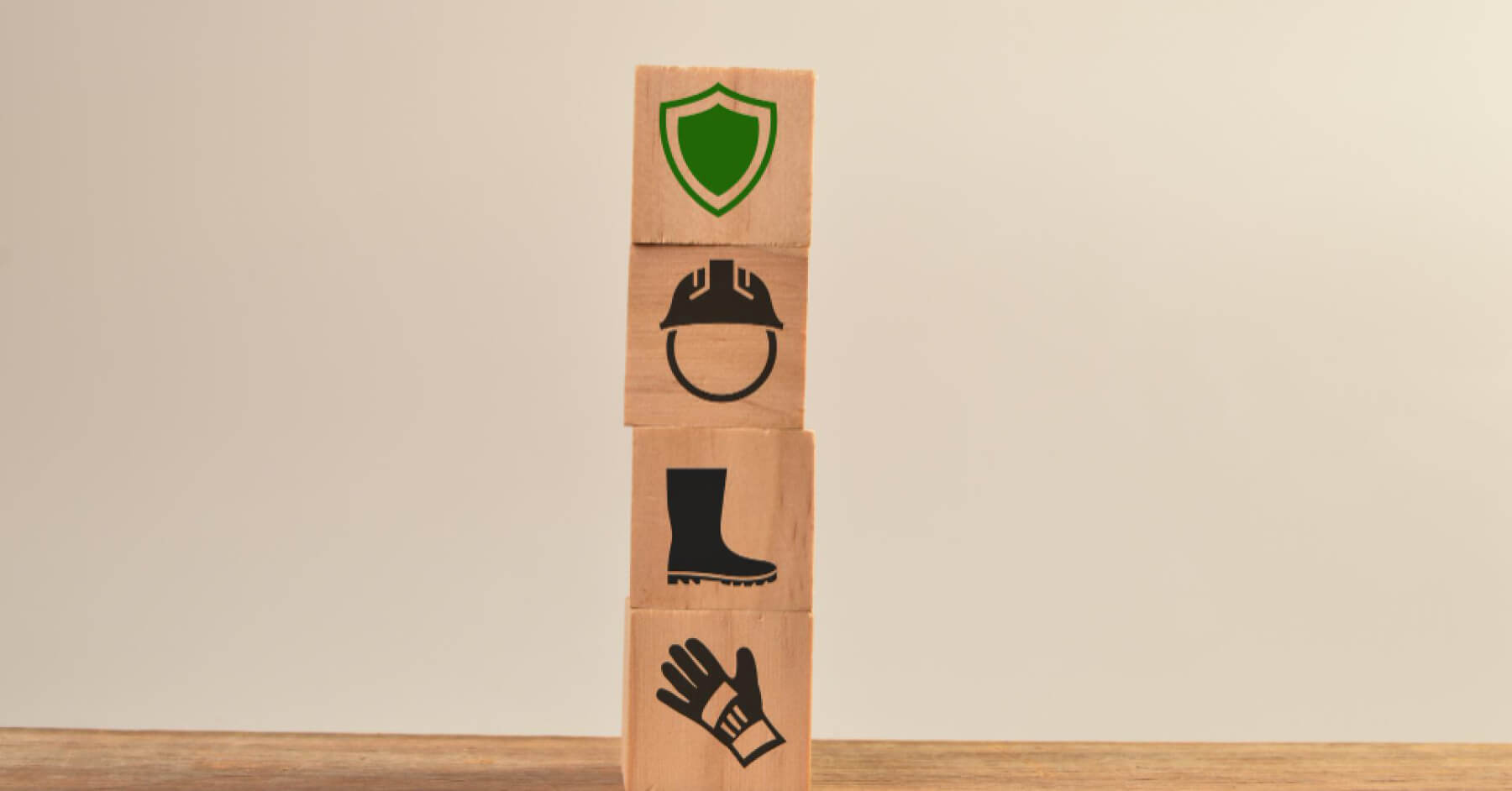
Even in companies that pride themselves on safety, cracks can appear long before a serious incident happens. A safety culture in blue-collar industries isn’t something you check off once; it’s built daily through actions, trust, and communication. Spotting warning signs early allows leaders to intervene before small issues turn into major accidents through effective training methods. Here are 10 signs your safety culture might be struggling — and what to do about each:
1. Frequent minor accidents or near-misses
When scratches, slips, or near-misses happen regularly, it’s not just bad luck — it signals underlying problems. These incidents often go underreported, but patterns reveal gaps in training, equipment, or procedures. Leaders should track these events, analyze root causes, and involve teams in proactive solutions, including regular safety training and implementing on-the-job training to address skill gaps, to prevent bigger accidents down the line.
2. Workers ignore safety protocols
If employees consistently skip personal protective equipment PPE, lockout procedures, or safety checklists, it shows the employee safety mindset hasn’t taken hold. Simply posting rules isn’t enough; teams need context, reminders, and real-life examples showing how following protocols prevents injuries. Recognizing individuals or teams who adhere to safety standards also reinforces the behavior.
3. Safety concerns go unreported
When employees fear retaliation or believe reporting hazards won’t make a difference, dangerous conditions remain hidden. Lack of safety and trust in frontline jobs can create a ticking time bomb without effective hazard communication. Anonymous reporting channels, regular check-ins, and leaders actively addressing concerns build confidence that speaking up matters.
Involving the blue-collar workforce in safety planning further addresses concerns proactively by engaging employees in developing protocols, conducting assessments, and ensuring ongoing training.
4. Managers rarely lead by example
If supervisors cut corners or overlook risks, it communicates that speed and output matter more than safety. Teams notice and often mimic behavior. Leaders have a moral imperative to model safe behaviors, demonstrating visibly that safety is a core ethical responsibility. Leaders need to demonstrate safe practices visibly, from following protocols to stopping operations when hazards appear — setting a clear example that safety is non-negotiable.
5. Poor communication about hazards
Miscommunications about procedures, changes, or new risks point to weak blue-collar safety communication. In fast-moving, shift-based environments, critical information can get lost. Clear briefings, safety committees, multilingual signage, and accessible tools that deliver timely updates ensure everyone knows what to do to stay safe. Additionally, safety audits and inspections provide valuable insights that help improve communication and address gaps in hazard awareness.
6. Safety meetings feel like a checkbox
When meetings, audits, or toolbox talks are treated as formalities, engagement drops. Employees tune out because they don’t see the impact of these efforts. Making discussions interactive, highlighting previous incidents, and showing tangible improvements helps workers see that safety practices genuinely protect them.
7. High turnover in frontline roles
Unsafe environments push employees out, especially in blue-collar roles where physical demands and hazards are greater. High turnover, particularly on shop floors or job sites, can signal hidden safety issues. Tracking exit interviews and listening to departing employees provides insight into gaps in workplace safety for industrial teams, allowing leaders to address problems before they escalate and to create a safer working environment that helps retain employees.
8. Lack of continuous improvement
A stagnant manufacturing safety culture that never evolves leaves workers unprepared for new hazards or processes. Safety should be dynamic: regularly reviewing incidents, updating protocols, introducing new safety protocols as part of continuous improvement, and incorporating employee suggestions ensures that teams adapt to changing conditions and emerging risks.
9. Inconsistent enforcement of rules
When safety standards are applied unevenly across shifts or departments, employees lose trust in leadership. Some may feel rules are optional, which increases risk. Consistent enforcement and accountability reinforce fairness and demonstrate that safety expectations are universal, not situational, and that adherence to safety regulations is essential in every department.
10. Low engagement with safety tech
If safety engagement software or reporting apps are underused, it’s often because employees don’t see real value. User-friendly tools, integrated into daily workflows, paired with visible follow-up on reports, show teams that technology is helping them work more safely rather than adding more tasks to their plate.
Knowing the red flags is vital, but real progress comes from seeing safety through your employees’ eyes. So what exactly makes a workplace feel safe to the people on the floor every day?
How do blue-collar employees define a “safe” work environment?
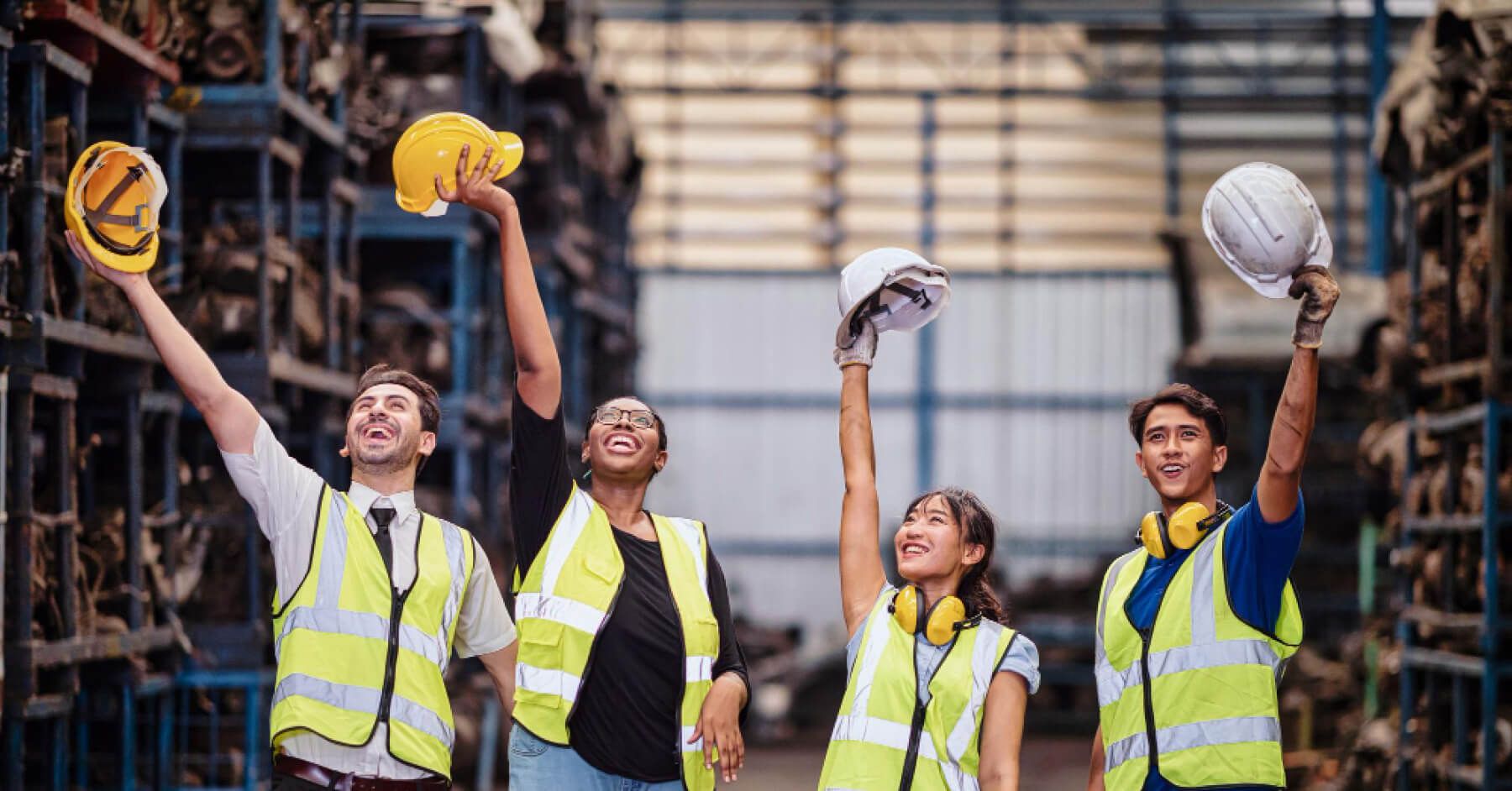
TL;DR
For blue-collar employees, a “safe” work environment isn’t just about hard hats and warning signs — it’s about knowing they can do their jobs without unnecessary risk. Clear procedures, well-maintained equipment, and hazard-free spaces are non-negotiables.
They also value leaders who listen to concerns, respond quickly to issues, and foster a culture where speaking up about safety isn’t seen as complaining but as protecting the whole crew.
For blue-collar employees, a “safe” work environment isn’t just about rules or signage; it’s about feeling confident that every day, they’ll return home in one piece. A safe working environment also means having access to first aid kits and aid kits on-site, ensuring quick response to emergencies and compliance with safety standards.
Safety is measured by actions, not words, and by whether leaders genuinely prioritize their wellbeing. Workers often define safety in terms of workplace safety for industrial teams that is predictable, consistent, and supported by everyone on site.
Clear communication plays a huge role. Teams value blue-collar safety communication that keeps them informed about hazards, equipment updates, or process changes. When employees know what to expect and how to respond, they feel empowered to make safer choices.
Trust also matters. Employees assess whether leadership practices safety and trust in frontline jobs through actions — do supervisors stop unsafe work, listen to concerns, and enforce protocols fairly? When workers see that care for their physical and mental health isn’t just lip service, engagement rises, and adherence to safety practices strengthens.
Finally, access to the right tools, training, and safety engagement software contributes to a sense of control over risk. In short, a safe environment is one where policies, communication, and culture combine to make safety an everyday, shared responsibility, supported by proper respiratory protection and ear protection for all workers.
A safe environment isn’t just about protocols, it’s about confidence and consistency. At the heart of that feeling is trust, the single factor that determines whether safety rules become real habits.
Why is trust the backbone of workplace safety in industrial roles?
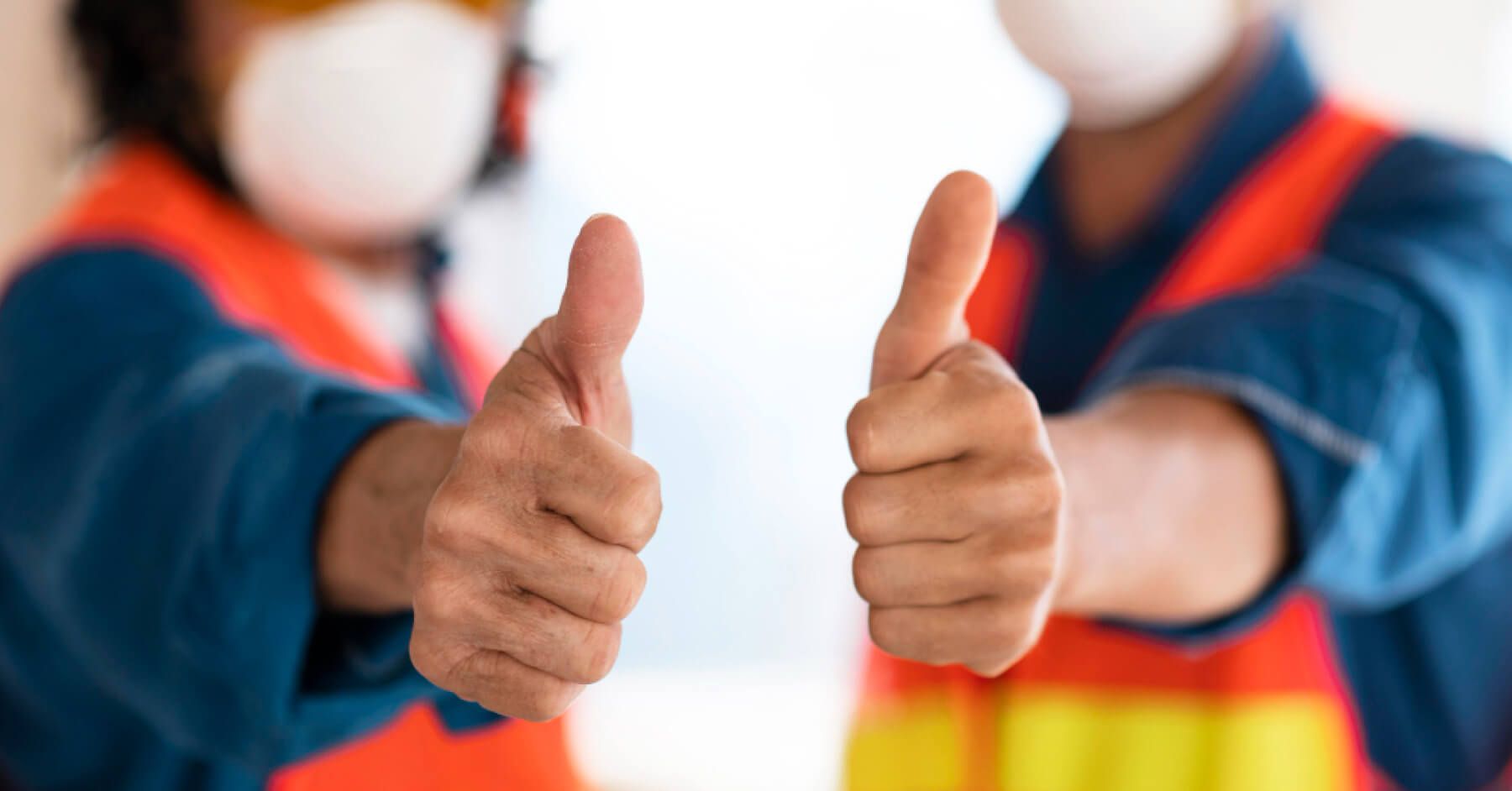
Trust isn’t just a feel-good concept on the shop floor — it’s the foundation of any effective safety culture in blue-collar industries. When employees trust leadership, processes, and each other, safe behaviors become second nature rather than forced compliance.
Here’s why trust drives workplace safety in industrial roles, and the importance of safety audits :
- Encourages open reporting of hazards: Workers are more likely to report unsafe conditions or near-misses when they trust leadership to act without blame. This transparency helps prevent small issues from escalating into serious incidents and strengthens workplace safety for industrial teams.
- Builds confidence in management decisions: When employees trust that supervisors make safety-focused decisions, especially those guided by health administration policies and OSHA standards, they follow procedures consistently. This trust ensures teams rely on guidance even in high-pressure situations, reinforcing a strong employee safety mindset.
- Reduces fear-based shortcuts: In environments lacking trust, workers may hide mistakes or take risks to avoid reprimands. A trust-driven culture encourages them to prioritize safe practices, rather than cutting corners to save time.
- Strengthens blue-collar safety communication: Effective blue-collar safety communication thrives in an environment where employees believe their messages are heard and acted upon. Trust ensures critical updates are taken seriously and acted on promptly.
- Promotes team accountability: When trust is high, team members hold each other accountable for safety standards. Peer reinforcement complements leadership efforts, creating a self-sustaining culture where safety and trust in frontline jobs are part of daily routines.
Trust is essential, but it doesn’t appear by chance. Managers and foremen shape how much workers believe in safety priorities every day and their actions can build or break a safety-first culture.
The role of managers and foremen in building safety-first teams
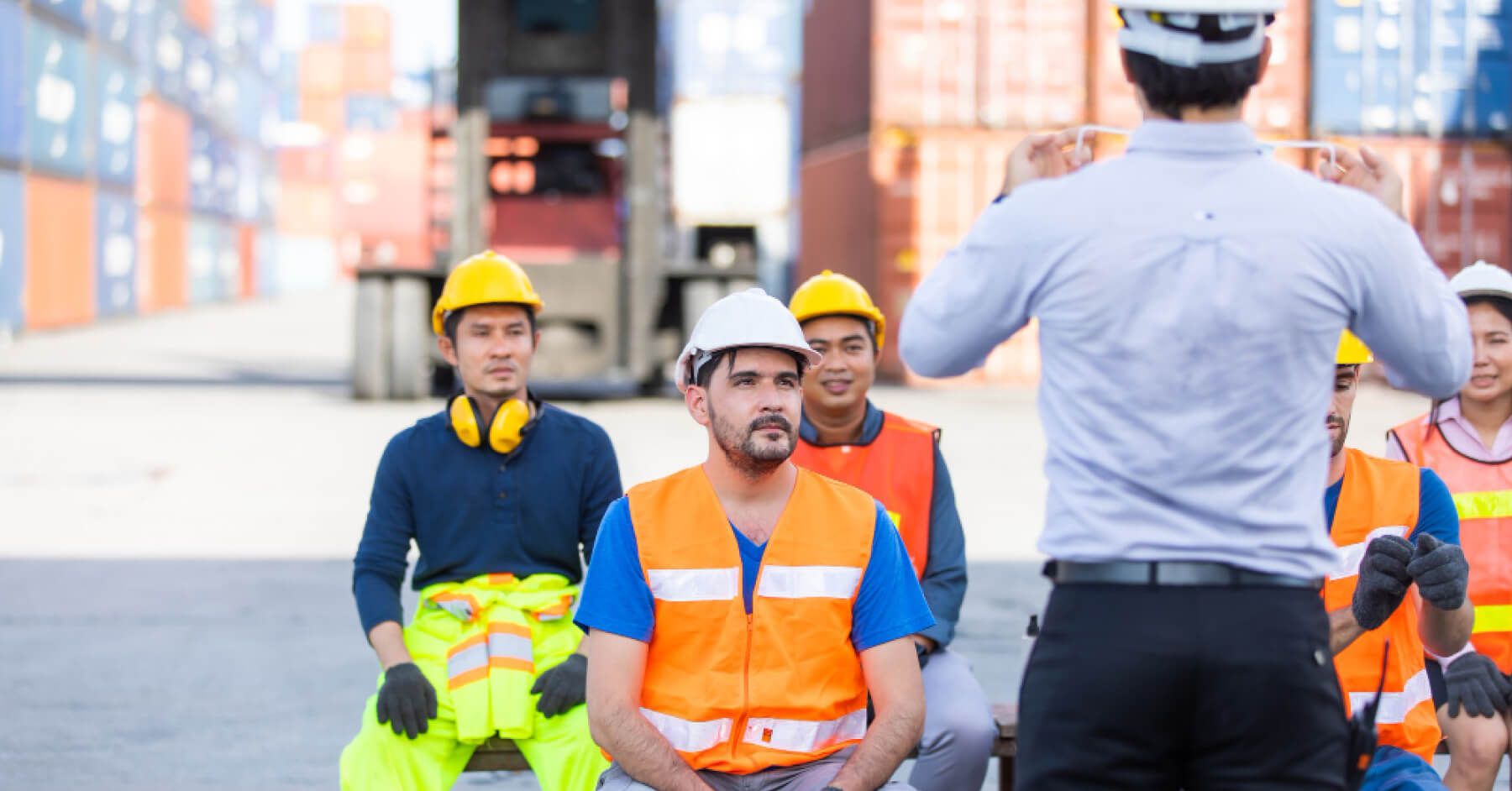
Managers and foremen aren’t just supervisors. They are the linchpins of safety culture in blue-collar industries. Their behaviors, decisions, and priorities set the tone for every shift, jobsite, or production line. When leaders actively champion safety, it trickles down to every team member, creating habits that protect both people and productivity.
TL;DR
For blue-collar employees, a “safe” work environment goes beyond visible precautions like helmets and warning labels — it’s about confidence that their daily tasks won’t put them in harm’s way. This means clear safety protocols, functioning tools, and well-maintained machinery are always in place.
They also define safety by trust in leadership — knowing concerns will be heard, hazards addressed quickly, and that raising a red flag is seen as safeguarding the team, not slowing down the job.
- Modeling safe behaviors: Employees watch leaders more than they listen to them. When managers consistently follow protocols, wear PPE, address hazards immediately, and emphasize the importance of fall protection and safe practices when operating heavy machinery, it reinforces workplace safety for industrial teams and shows that rules are serious, not optional.
- Reinforcing an employee safety mindset: Managers who take time to explain why procedures exist, rather than just enforcing them, help build a proactive employee safety mindset. Workers begin to internalize safe practices, thinking ahead instead of reacting.
- Encouraging open communication: Foremen who actively solicit feedback and listen to concerns foster blue-collar safety communication. When employees feel heard, they are more likely to report hazards, share ideas, and prevent accidents before they happen.
- Providing resources and training: A safety-first leader ensures teams have the right tools, training, and safety engagement software to manage risk. Access to these resources empowers employees to work safely without guesswork or improvisation.
- Recognizing and rewarding safe practices: Acknowledging individuals or teams who prioritize safety reinforces positive behavior. Celebrating these actions strengthens safety and trust in frontline jobs, showing that leadership values wellbeing as much as output.
Even with strong leaders, safety fails when messages don’t reach everyone. Communication breakdowns are one of the biggest hidden causes of preventable accidents.
Why do communication gaps lead to avoidable accidents?

Even the best safety protocols can fail if messages don’t reach the people who need them. In safety culture in blue-collar industries, communication gaps are often the hidden culprits behind accidents that could have been prevented. Clear, consistent, and timely information is essential to keep everyone on the same page.
- Misunderstood procedures: When instructions aren’t communicated clearly, employees may interpret them differently, leading to mistakes on the job and increasing the risk of potential hazards. Strong blue-collar safety communication ensures everyone knows exactly how to handle tasks safely, reducing confusion that can cause incidents.
- Delayed hazard reporting: If workers don’t know who to inform or fear their messages won’t be acted on, hazards may go unaddressed. Encouraging prompt reporting strengthens workplace safety for industrial teams and allows quick mitigation before accidents occur.
- Inconsistent safety messaging: When rules and updates are shared inconsistently across shifts or locations, employees can develop bad habits. Clear communication from leadership builds trust and fosters a uniform employee safety mindset across the team.
- Language or shift barriers: Frontline teams are often diverse, working across multiple shifts and languages. Without inclusive blue-collar safety communication, vital safety instructions may be missed, increasing the risk of preventable accidents.
- Lack of feedback loops: Communication isn’t one-way. When employees can provide feedback and see it acted upon, it reinforces safety and trust in frontline jobs, encouraging continuous improvement and hazard reporting.
- Overreliance on outdated methods: Relying solely on bulletin boards, memos, or infrequent meetings can leave gaps. Integrating safety engagement software ensures that updates, alerts, and best practices reach every worker in real time, reducing avoidable risks.
Fixing communication isn’t only about sending clearer instructions, it’s about making sure workers feel safe to speak up. Next, we’ll see how to encourage reporting without fear of blame.
How to encourage open reporting of safety concerns without fear?

Encouraging employees to report safety concerns without fear is a cornerstone of safety culture in blue-collar industries. When workers feel secure speaking up, hazards get addressed quickly, and near-misses don’t escalate into serious accidents. Creating a culture where reporting is welcomed, not punished, takes consistent effort from leadership, alongside comprehensive training.
- Lead by example: Managers and foremen must show that raising safety concerns is valued. When leadership acts promptly on reported hazards, it signals that safety outweighs blame and builds safety and trust in frontline jobs.
- Implement anonymous reporting channels: Not everyone is comfortable speaking up directly. Anonymous tools or safety engagement software give employees a voice without fear of reprisal, ensuring critical issues are never hidden.
- Respond constructively, not punitively: Addressing concerns without assigning blame encourages more reporting. Recognize that mistakes are opportunities for improvement and foster an employee safety mindset focused on prevention.
- Communicate the impact: Share stories of how reported hazards prevented accidents. When employees see the real-world effect of their vigilance, engagement, and adherence to workplace safety for industrial teams.
- Train leaders to listen actively: Supervisors should practice empathetic listening, ask clarifying questions, and take notes. Strong blue-collar safety communication ensures employees feel heard and valued.
- Celebrate proactive reporting: Recognizing teams or individuals who spot risks reinforces the behavior. Public acknowledgment strengthens the manufacturing safety culture and shows that vigilance is appreciated, not penalized.
Can anonymous employee feedback improve safety awareness?
TL;DR
Anonymous employee feedback can be a game-changer for safety awareness in blue-collar settings. When workers know they can flag hazards without fear of retaliation, they’re more likely to share honest, on-the-ground insights about risks that managers might miss.
It also helps uncover recurring issues or unsafe habits early, allowing leaders to address them before they escalate — strengthening both safety protocols and trust across the team.
Anonymous employee feedback can be a game-changer for safety culture in blue-collar industries. On busy factory floors or job sites, frontline workers face unique challenges such as feeling disconnected from corporate goals or concerns about morale and retention.
Not every worker feels comfortable raising concerns openly. Fear of judgment, retaliation, or appearing incompetent can keep critical hazards hidden. Anonymous channels remove these barriers, giving employees a safe way to share observations, near-misses, or suggestions for improvement.
When workers use these channels, leadership gains a clearer picture of real risks on the ground. Patterns and recurring issues emerge, allowing managers to address systemic problems rather than just individual incidents. This approach strengthens workplace safety for industrial teams and fosters a proactive employee safety mindset, including emergency preparedness, where potential dangers are caught before they escalate.
Anonymous feedback also improves blue-collar safety communication by creating a reliable flow of insights from frontline teams. When employees see that their input leads to visible changes, updated protocols, new equipment, or improved processes, trust grows, and adherence to safety standards rises. Integrating safety engagement software ensures that feedback is tracked, acted upon, and communicated back to the team, reinforcing a culture where everyone feels empowered to protect themselves and their coworkers.
Anonymous feedback strengthens awareness, but acting on it at scale requires the right tools. Here’s how technology turns safety from a policy into a daily practice.
What tech and tools help improve safety culture on the ground?
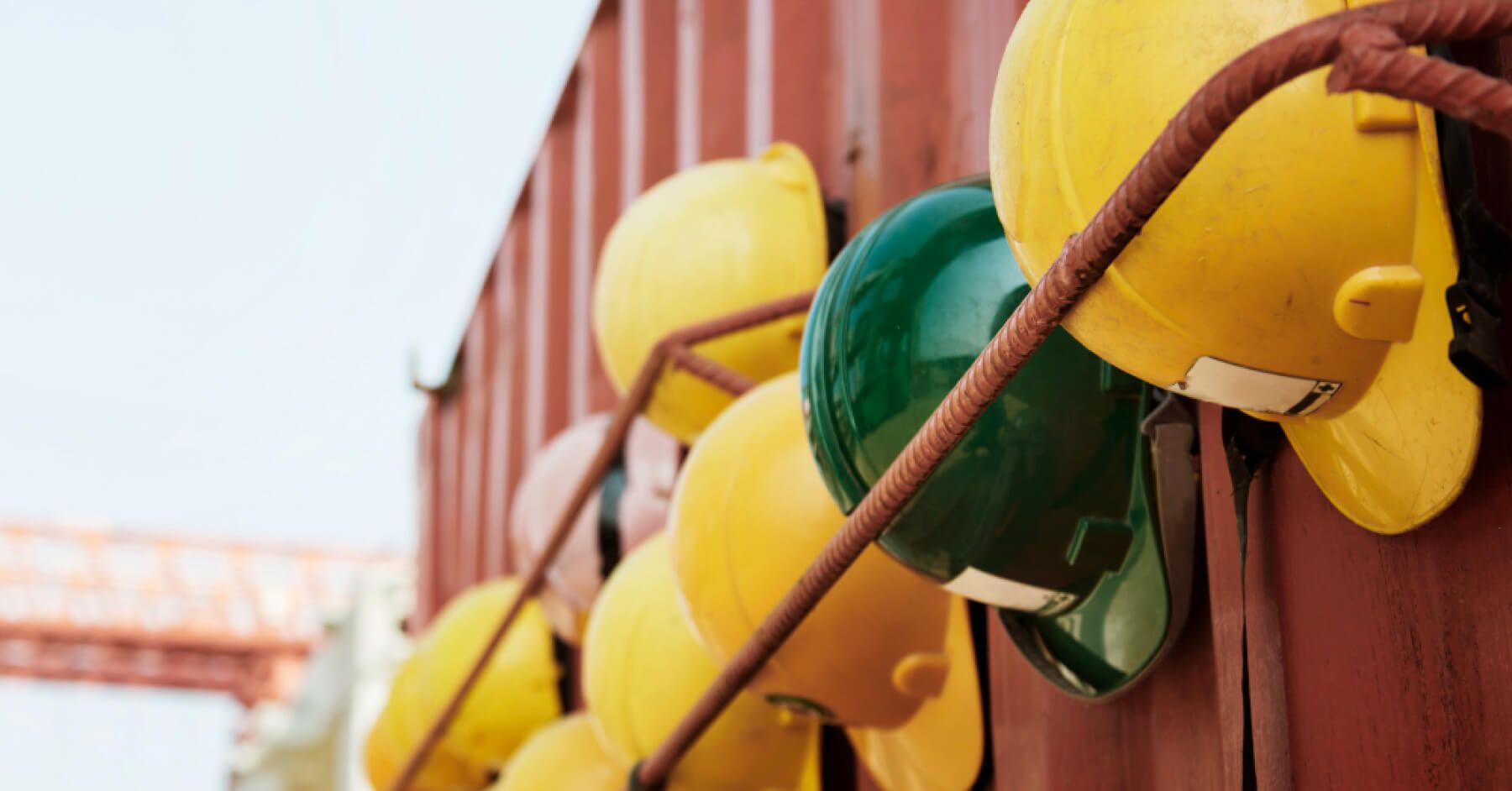
Technology can turn safety from a checklist into a living, breathing part of daily operations. In safety culture in blue-collar industries, the right tools help teams spot hazards, communicate effectively, and track progress in real time. Here are five types of tech that make a real difference on the ground:
- Safety engagement software: Platforms designed for frontline teams centralize hazard reporting, track incidents, and provide dashboards for managers. Using safety engagement software ensures feedback doesn’t get lost and helps employees feel their input is valued, reinforcing a strong employee safety mindset.
- Mobile reporting apps: Apps allow workers to report unsafe conditions instantly from their smartphones or tablets. Real-time reporting improves blue-collar safety communication, speeds up hazard resolution, and prevents near-misses from turning into accidents.
- Wearable safety devices: From smart helmets to proximity sensors, wearables alert workers to potential dangers on the spot. These tools directly support workplace safety for industrial teams by providing immediate warnings in high-risk areas.
- Digital checklists and audits: Replacing paper forms with digital checklists ensures that every procedure is followed consistently. These tools help enforce manufacturing safety culture standards and allow managers to spot gaps or recurring risks efficiently.
- Training and simulation platforms: Virtual reality and interactive modules give employees hands-on safety practice without exposure to real danger. Using tech-driven training reinforces safe behaviors and builds confidence across the workforce.
Having the right tech is one step, but the real benchmark comes from industry leaders who have built world-class safety cultures. Let’s see how top companies set the standard.
Safety culture is too soft a concept and won’t stop accidents in blue-collar settings.
Some skeptics argue that focusing on safety culture is just a “nice-to-have”, that real prevention happens via rules, gear, and inspections, not culture shifts. But strong culture underpins compliance, responsiveness, and accountability.
In fact, a recent research by Top Research Institute shows many blue-collar workers perceive their safety programs as inadequate: 26% of blue-collar employees say workplace safety measures fall short, suggesting culture gaps, not just technical controls, undermine protection.
When you build a culture where workers feel heard, trust safety decisions, and speak up without fear, the formal rules are more likely to be followed and hazards caught earlier.
How do companies in construction, manufacturing, and logistics lead on safety?
Leading companies in construction, manufacturing, and logistics don’t treat safety as a side task, they embed it into every process, decision, and interaction. A safety culture in blue-collar industries isn’t just about compliance; it’s about creating environments where employees feel protected, heard, and empowered to act proactively.
- Prioritizing leadership involvement: Top-performing companies ensure managers and foremen actively participate in safety programs. When leadership models safe behaviors and visibly addresses hazards, it strengthens safety and trust in frontline jobs and sets the standard for the entire team.
- Investing in training and development: These organizations provide ongoing, hands-on safety training, often using simulations or real-life scenarios. This approach builds a strong employee safety mindset and ensures workers can respond effectively to changing conditions on the ground.
- Leveraging technology: From safety engagement software to mobile reporting apps, companies use tech to track hazards, report near-misses, and communicate updates in real time. This improves blue-collar safety communication across shifts and sites.
- Encouraging open feedback: High-performing organizations actively solicit input from employees, including anonymous channels, to identify hidden risks. This strengthens workplace safety for industrial teams by making hazard reporting part of daily routines.
- Continuous improvement culture: Leading companies regularly review incidents, audit processes, and update protocols. By evolving their manufacturing safety culture, they stay ahead of risks and maintain high safety standards, even as operations scale.
How does CultureMonkey support safety-driven engagement and feedback?

CultureMonkey is designed to bridge the gap between frontline teams and leadership, making safety culture in blue-collar industries more actionable and engaging. By centralizing communication, feedback, and reporting, it ensures that safety isn’t just a policy on paper — it becomes part of daily operations.
- Simplifying hazard reporting: With CultureMonkey, employees can quickly report unsafe conditions or near-misses from their devices. This real-time reporting strengthens workplace safety for industrial teams and ensures hazards are addressed before they escalate.
- Encouraging anonymous feedback: Some employees hesitate to speak up openly. CultureMonkey’s anonymous reporting options help build safety and trust in frontline jobs, allowing all voices to be heard without fear of reprisal.
- Streamlining communication: The platform supports clear, consistent blue-collar safety communication across sites, shifts, and languages. Updates, alerts, and safety reminders reach everyone instantly, reducing misunderstandings.
- Tracking engagement and trends: CultureMonkey collects feedback data and highlights patterns, helping managers identify weak spots in manufacturing safety culture and take proactive measures.
- Reinforcing safety behaviors: By recognizing and celebrating safe practices, CultureMonkey motivates teams to internalize a strong employee safety mindset, creating a self-sustaining safety culture across the organization.
Conclusion
Building a strong safety culture in blue-collar industries isn’t just about compliance; it’s about creating an environment where employees feel protected, heard, and empowered to act. Trust, clear blue-collar safety communication, and a proactive employee safety mindset are the foundation of safer, more efficient workplaces. Leaders set the tone, technology enables action, and feedback loops ensure continuous improvement. When safety becomes part of daily routines, accidents decrease, morale rises, and productivity improves.
To make this process easier, tools like CultureMonkey help centralize reporting, track hazards, and encourage anonymous feedback, giving your teams a voice while reinforcing workplace safety for industrial teams. Start using CultureMonkey today to turn safety culture from a concept into reality.
FAQs
1. What is safety culture in blue-collar industries?
Safety culture in blue-collar industries is the shared mindset, values, and daily habits that prioritize employee protection. It’s not just following rules; it’s about fostering trust, open communication, and a proactive employee safety mindset. Strong training programs and culture ensure frontline teams recognize hazards, implement proper lifting techniques, report risks, and make safety an integral part of their daily routines, improving both well-being and productivity.
2. What’s the difference between safety training and safety culture?
Safety training teaches procedures, regulations, and compliance, often in structured sessions. Safety culture, however, is the everyday mindset and behavior that reinforces these lessons. While training provides knowledge, a strong safety culture in blue-collar industries ensures employees internalize safety, communicate hazards effectively, and prioritize workplace safety for industrial teams continuously, beyond scheduled sessions or checklists.
3. Why does safety culture matter in industrial and frontline jobs?
In industrial and frontline roles, risks are constant, and hazards can escalate quickly. A strong safety culture in blue-collar industries reduces accidents, protects employees, and maintains productivity. It fosters trust, encourages reporting, and strengthens blue-collar safety communication through regular safety audits, creating environments where teams act proactively rather than reactively, and employees feel valued and confident in their day-to-day work.
4. How do you make safety part of your daily team routines?
Safety becomes routine by embedding it into every task, briefing, and interaction. Leaders model behaviors, encourage hazard reporting, and leverage tools like safety engagement software to track risks. Regular reminders, open feedback channels, and peer accountability reinforce a consistent employee safety mindset, making hazard awareness and safe practices second nature rather than optional or occasional.
5. How can we tell if our safety culture needs improvement?
Signs your culture may need attention include frequent near-misses, skipped protocols, low hazard reporting, inconsistent enforcement, or disengaged employees. Monitoring workplace safety for industrial teams, soliciting feedback, and analyzing incident patterns reveals gaps. Low trust, poor blue-collar safety communication, and minimal engagement with safety tools also indicate that the culture needs reinforcement to prevent accidents and boost team morale.



